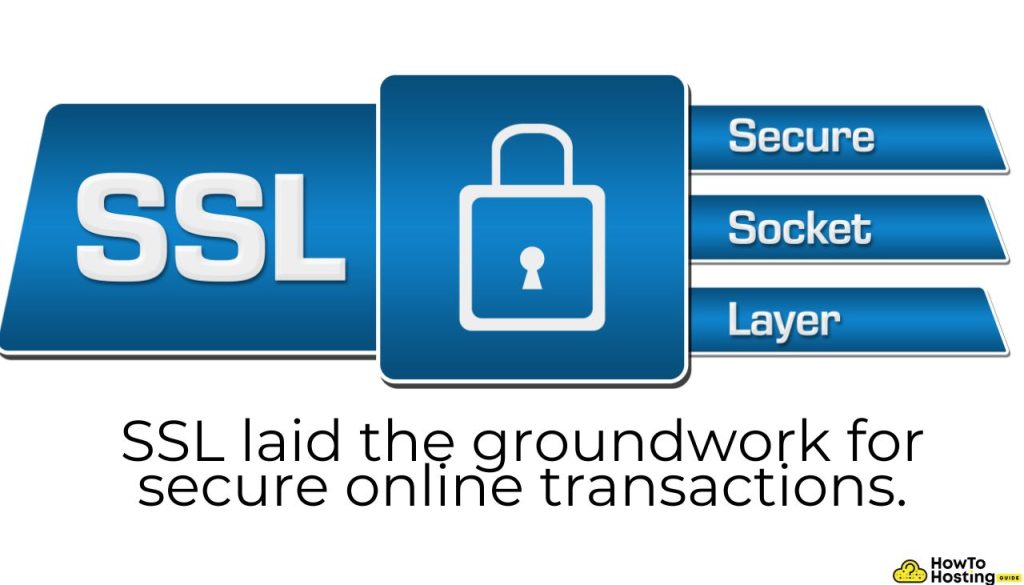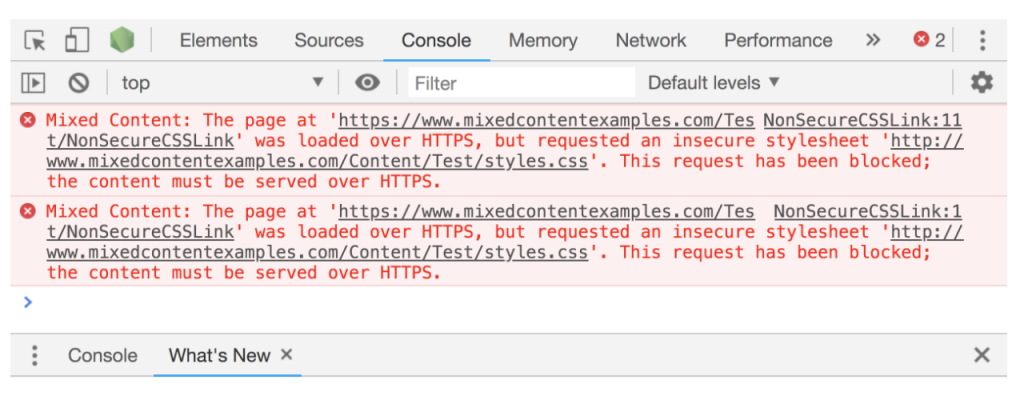On This Page: [hide]
The use of the HTTP protocol as opposed to its secure version (HTTPS) is becoming a major issue in most contemporary sites. More and more applications and content management systems enforce the use of HTTPS, and the former, “unsafe” HTTP is regarded as not advisable even by search engines.
The use of the secure HTTPS protocol adds not only a layer of security but also authenticity. Contemporary search engines view HTTPS variant sites as legitimate and authentic, especially if they are hosted on top-level domain names and include verified security certificates. The use of this technology is also a requirement with some of the applications and services that are hosted on the web.
In terms of security, if the newer standard is to be enforced, it is usually part of a wider part of implementations that are done to safeguard the site and its visitors from common malicious threats. This can include any of the following website features:
- Firewall – Most hosting providers allow the web administrators to choose how incoming and outgoing connections are filtered from potential threats. The ports that are used to communicate the web protocols should be accessible, while other technologies and functions can remain restricted.
- Network Analysis – The hosting providers and customers that have full access to the data stream can monitor the online sessions for any potential abuse.
- Web Applications and Services Configuration – If any of the installed programs and services depend on the secure implementation, the administrators should test configuration, ensuring that proper redirects have been made. This is due to the fact that some of the popular content management systems (like WordPress) and their plugins require strict running over HTTPS only.
This guide shows the difference between these two protocols and why they matter.
HTTP: What It Stands For and Its Role Online
Hypertext Transfer Protocol, or HTTP, is essentially the foundation on which browsing the web is built. This system of rules facilitates the conversation between your web browser–like Chrome, Safari, or Firefox–and the web servers that hold the information you wish to access.

In layman’s terms, HTTP is the main standard through which we can access the Internet via the browser. When someone types in an address in their browser, the software will automatically retrieve it by following the rules set in the HTTP protocol.
Connections that are done via the HTTP are made on demand, which means that every single request when completed will end the network transmission. When it was devised in the early days of the World Wide Web (WWW) this was the connection of choice as it allowed the machines to have a convenient method of communications.
However, as the complexity of the Internet grew, so computer crimes started to happen. HTTP does not encrypt the data, meaning that the transmitted information can be potentially intercepted. One of the most popular types of criminal activity is known as the man-in-the-middle attack – or the spying of the network stream between two parties that use non-encrypted channels of communication.
But what does this mean for you as an internet user? Simply put, every time you enter a website address into your browser, you’re making use of HTTP. This protocol sequences your request into a format that both your browser and the server can understand, ensuring that you reach and interact with the desired webpage efficiently. It’s this interaction that has paved the way for the vast, interconnected digital world we navigate daily.
The Core Functions of HTTP in Web Browsing
Understanding the core functions of HTTP in web browsing highlights its significance in our daily online activities. HTTP operates on a request-response model that serves as the backbone for any web interaction. Here’s a simplified look at how it works:
- Initiating a Request: When you type a URL into your browser and hit enter, you’re creating an HTTP request. This is your browser’s way of saying, “I would like to view this webpage, please.”
- Sending the Request: Your request is forwarded to the appropriate web server via the internet. This server houses the website you’re trying to access.
- Processing the Request: The server, upon receiving your request, looks for the requested page. If it exists and there are no issues, the server prepares to respond.
- The Response: The server responds to your browser with the requested page, alongside a status code indicating whether the request was successful. This is often seen as the webpage loading on your screen.
- Closing the Connection: After the page is sent and successfully loaded on your browser, the connection between your browser and the server is closed. New connections will be established for any further requests.
This straightforward yet powerful protocol has revolutionized how we access information, enabling instant, global access to knowledge and services. However, it’s crucial to remember that HTTP is not without its limitations. The most significant among these is its lack of security features. Data sent via HTTP is unencrypted, making it vulnerable to interception and tampering. This is where HTTPS comes in, building on HTTP’s foundation by adding a layer of encryption to protect data exchanged online.
As we continue to move more of our daily activities online, understanding and utilising the secure version of HTTP – HTTPS – becomes ever more important. From shopping to socializing, the transfer protocol used by a website plays a key role in safeguarding our digital interactions. Thus, recognizing the ‘HTTP’ or ‘HTTPS’ at the beginning of a web address is not just a technical detail – it’s an indicator of your online safety.
HTTPS: Beyond Basic Encryption
While most internet users recognize the padlock icon indicating a secure HTTPS connection, the technology securing this connection goes far beyond simple encryption.

HTTPS, or Hypertext Transfer Protocol Secure, is the newer protocol that adds a “Secure” feature by enforcing TLS (Transport Layer Security) that is to be used during all network transmissions. TLS is a strict and strong security standard that adds in a powerful encryption cipher to process the requested information.
HTTPS establishes a private communication channel over the internet, safeguarding the integrity and confidentiality of data between the user’s browser and the website they are visiting. This advanced layer of security is paramount in an era where information security cannot be taken for granted.
SSL/TLS Encryption: The Backbone of HTTPS Security
At the core of HTTPS security are two pivotal technologies: SSL (Secure Sockets Layer) and TLS (Transport Layer Security). Both are cryptographic protocols, but they serve slightly different purposes despite their common goal of securing communications over a network. SSL, the older of the two, laid the groundwork for secure online transactions. TLS, its successor, provides improved, robust encryption.

How do SSL and TLS function to protect data? It begins when a website acquires an SSL/TLS certificate, a digital document that verifies the website’s identity and encrypts information sent to the server using SSL/TLS technology. This certificate contains two keys: a public key, which anyone can use to encrypt a message to the website, and a private key, which the recipient website uses to decrypt messages it receives.
- Encryption: This transforms data into a coded format during transmission, making it unreadable to anyone except the holder of the private key, ensuring that sensitive data such as passwords and credit card numbers remain confidential.
- Authentication: This verifies that the website is genuinely what it claims to be, protecting users from phishing sites or other forms of online impersonation.
- Data Integrity: This ensures that the data sent and received has not been tampered with or altered in any way during transit.
Understanding the role of SSL/TLS in HTTPS underlines the critical importance of encrypted connections in today’s online environment. By turning to secure protocols and encryption technology, users and website owners can vastly reduce their susceptibility to cyber threats, making HTTPS an essential component of internet security.
Comparing HTTP and HTTPS: What Sets Them Apart?
When deciding whether to use HTTP or HTTPS for your website, understanding the key differences between these two protocols is crucial. HTTP (Hypertext Transfer Protocol) is the foundation of any data exchange on the web. However, it operates without any form of encryption, meaning that any data transferred is sent in plain text. This could potentially be intercepted or read by anyone who has access to the network. Imagine sending a postcard through the mail; just as anyone can flip it over and read the message, data sent over HTTP can be easily read by cybercriminals.
HTTP, as the older standard, is enforced by default on all web pages, this is the behavior that browsers expect. Unless the newer version of the protocol is specifically implemented and enabled on a given page (or overall site), the plain version will be loaded.
One of the key disadvantages is its complexity in setting up – this requires key server configuration files changes, sometimes in the pages themselves (especially when placing links), and other areas. This may be difficult for some, as it may not be a straightforward procedure.
The main advantage of the secure protocol remains the security aspect, as it enables encryption of the data that is loaded. HTTPS introduces an essential layer of security through SSL/TLS encryption. This turns the data into a coded message that can only be decrypted by the intended recipient’s browser. It’s akin to sending your information in a locked safe; even if someone gets their hands on it, they can’t break in to see what’s inside.
HTTPS not only encrypts the data but also provides authentication, ensuring that users are communicating with the intended website and not an imposter, as well as data integrity, which guarantees that the data sent and received has not been altered or corrupted.
The decision between HTTP and HTTPS can significantly impact your website’s security, privacy, and the trust your users place in you. With the increasing concerns over cyber threats and privacy, switching to HTTPS is becoming less optional and more a necessity for all website owners. Plus, given that browsers like Chrome now flag HTTP sites as ‘not secure’, the choice becomes even clearer. HTTPS protects your site’s integrity and the privacy and security of your users, making it the obvious choice in a web increasingly focused on security.
The SEO Advantages of Upgrading to HTTPS
Switching your website from HTTP to HTTPS doesn’t just improve security – it can also give your site an SEO boost. Google has explicitly stated that HTTPS is a ranking signal, meaning that HTTPS sites have a higher chance of ranking above HTTP sites in search results. This shift reveals the importance of not only providing secure and encrypted connections but also enhancing your website’s visibility and traffic through better SEO performance.

In terms of SEO, the secure version is always the preferred version of a web page. Website administrators should not that practically all of the well-known search engines perform a validation check during the ranking operations.
This is a prescribed sequence done by the search engine bots that check for important information during its initial access to a given site. Its main goal is to check for a valid security certificate, validate the posted information, and also to check for the presence of an HTTPS version. This marks that it is safe to transfer potentially private information to and from the website.
- Trust and Credibility: Users are more likely to trust and engage with websites that have the secure padlock icon in the address bar. This trust can lead to increased visitor engagement, lower bounce rates, and higher conversion rates—all of which are positive signals to search engines.
- Privacy and Security: Encrypting the data transmitted between your website and its users helps protect sensitive information. This strengthened security is crucial for user trust and confidence, contributing to a positive user experience that is highly valued by search engines.
- Referral Data Preservation: When traffic passes from a secure HTTPS site to a non-secure HTTP site, referral data is lost, and the visit can appear as direct traffic in analytics. However, HTTPS preserves this referral data, providing more accurate analytics on where your traffic is coming from. Better data enables more informed SEO and marketing decisions.
Moving to HTTPS is an investment in your website’s future. Not only does it secure your site, but it also supports your SEO strategies by improving rankings, building trust with your visitors, and providing accurate analytics data. While the migration process requires some effort, the combined benefits of security and SEO make HTTPS an essential foundation for any website in the modern digital landscape.
Why HTTPS Matters: Benefits Beyond Security
When we talk about HTTPS (Hypertext Transfer Protocol Secure), the first thing that often comes to mind is its role in securing data. However, HTTPS has evolved to become a foundational element of trustworthy web browsing and internet use, offering benefits that extend far beyond just security. By encrypting the data exchanged between a user’s browser and the website they’re visiting, HTTPS ensures that any information remains confidential and tamper-proof during transmission.
This encryption is vital in an era where data breaches and information theft are rampant. However, the advantages of using HTTPS don’t stop there. It also plays a crucial role in building user trust and website authenticity, and it has a surprising link with website performance, debunking common myths surrounding its impact on speed.
Enhancing User Trust and Website Authenticity with HTTPS
The presence of a secure HTTPS connection is immediately recognizable through the padlock icon in the address bar. This small symbol is a powerful indicator of a site’s credibility and security. For businesses, this translates into an essential element of trust-building with customers.
When users see the padlock, they feel more confident in engaging with the website, whether it’s entering sensitive personal information, making online purchases, or simply browsing. The psychological effect of this trust cannot be understated. It directly influences user decisions and their perception of a website’s authenticity. Furthermore, the assurance of a secure connection encourages users to stay longer and explore more, having a positive impact on site metrics and customer conversion rates.
The Performance Impact of HTTPS: Myths vs. Reality
One of the common misconceptions about HTTPS is that it significantly slows down web performance. However, this myth stems from early implementations of HTTPS encryption. Modern technology and optimizations have largely mitigated these performance concerns. In fact, enabling HTTPS can actually enhance website performance.
Thanks to protocols like HTTP/2, which is only supported over HTTPS, websites can load faster and more efficiently than ever before. HTTP/2 introduces features like multiplexing and server push, which reduce the number of connections needed between a server and a client, substantially improving load times.
Moreover, the use of Transport Layer Security (TLS) in HTTPS also includes optimizations that reduce the overhead of encryption, ensuring that security does not come at the expense of user experience. Thus, the performance impact of HTTPS has turned from a potential downside to an advantage, contributing to a faster, more secure browsing experience for users.
While the shift from HTTP to HTTPS involves careful planning and implementation, the long-term benefits of using HTTPS far outweigh the initial effort. Besides improving security, HTTPS boosts user trust, contributes to the authenticity of a website, and can even enhance site performance. These advantages make HTTPS an essential component for any website aiming to provide a secure, reliable, and efficient user experience.
Step-by-Step Guide to Migrating Your Website from HTTP to HTTPS
Migrating your website from HTTP to HTTPS is a critical step in securing user data and enhancing trust in your site. This process involves a few key steps, each aimed at ensuring a smooth transition while maintaining site functionality and search engine visibility.

Choosing the Right SSL Certificate for Your Website
The first step in transitioning from HTTP to HTTPS is selecting an SSL (Secure Sockets Layer) certificate that suits your website’s needs. SSL certificates encrypt data between the user’s web browser and your website, making sensitive information difficult for hackers to intercept.
There are three main types of SSL certificates:
- Domain Validated (DV) Certificates: These are the simplest form of SSL certificates, verifying only the ownership of the domain. Suitable for blogs and personal websites that do not handle sensitive user information.
- Organization Validated (OV) Certificates: OV certificates require more validation than DV certificates, including checks to confirm the business is legally registered. These are better suited for business websites that handle moderately sensitive data.
- Extended Validation (EV) Certificates: Providing the highest level of security, EV certificates involve a thorough validation process, including proof of business legality, physical location, and operational status. Ideal for eCommerce sites and those handling highly sensitive user data.
Consider your website’s specific needs, potential growth, and the level of trust you want to establish with your visitors when choosing your SSL certificate.
Configuring Your Website to Use HTTPS
Once you have your SSL certificate, it’s time to configure your website to use HTTPS. This involves a few crucial steps:
- Install the SSL Certificate: You can usually do this through your web hosting provider’s control panel or by following their specific instructions for SSL installation.
- Set Up 301 Redirects: Ensure that visitors and search engines are directed to the HTTPS version of your site by setting up 301 redirects from the HTTP URLs. This can often be done via your site’s .htaccess file or a plugin if you’re using a CMS like WordPress.
- Update Internal Links: Check and update all internal links, images, CSS, and JavaScript files to use HTTPS. This helps avoid mixed content issues, where some page elements are insecure, potentially exposing your site to vulnerabilities.
- Verify Site Security: Once these steps are completed, verify that your site displays a padlock icon in the browser address bar, signifying a secure connection.
By methodically following these steps, you can ensure a seamless transition to HTTPS, maintaining your SEO rankings and user trust.
Avoiding Common Pitfalls During and After the Migration
Migrating to HTTPS can sometimes introduce challenges. Here are some common pitfalls to avoid:
- Neglecting to Update Internal Links: Failing to update internal links to HTTPS can result in mixed content warnings, where some resources are loaded over an insecure connection.
- Forgetting to Renew SSL Certificates: SSL certificates have expiration dates. Not renewing them can lead to your site being flagged as insecure, deterring visitors.
- Improper 301 Redirects: Incorrectly setting up 301 redirects can impact your search engine ranking. Ensure all HTTP URLs are correctly redirected to HTTPS.
Dealing with Mixed Content Issues After Transitioning to HTTPS
Transitioning a website from HTTP to HTTPS is a critical step toward securing user data and improving trust. However, a common hurdle that many website owners face after making this switch is mixed content issues. These occur when a HTTPS site includes elements, such as images, videos, or scripts, loaded over an insecure HTTP connection. Not only can this undermine the security benefits of HTTPS, but it can also lead to warning messages in browsers that deter visitors.

Tools and Techniques to Identify and Fix Mixed Content
Thankfully, identifying and fixing mixed content is not overly complicated with the right tools and techniques. Here’s how you can ensure your website offers a safe browsing experience:
- Use Browser Developer Tools: Modern browsers like Chrome and Firefox include developer tools that can help you detect mixed content. By inspecting the console tab, you can see if there are warnings about mixed content, guiding you to the resources that need attention.
- Employ Online Checkers: There are various online tools available that scan your website for mixed content. They provide insights into specific URLs that cause the issues, making it easier to pinpoint and address the problem areas.
- Utilize Content Security Policy (CSP): Implementing a Content Security Policy helps in managing how resources are loaded on your site. By configuring a CSP report-only header, you can receive reports about mixed content issues without affecting your site’s functionality. This approach allows you to fix problems gradually.
- Update Internal Links: Manually checking your site’s code or using a content management system (CMS) to update internal links from HTTP to HTTPS is crucial. Ensure that all internal links, including those to images, stylesheets, and JavaScript files, are secure.
- Implement 301 Redirects: Setting up 301 redirects in your .htaccess file or through your web server configuration can automatically redirect HTTP traffic to HTTPS. This not only aids in resolving mixed content issues but also supports SEO efforts by consolidating link equity.
- Review Third-Party Integrations: Often, mixed content issues stem from external resources such as widgets, fonts, or APIs loaded over HTTP. Contacting providers for HTTPS support or finding secure alternatives is advisable.
In summary, addressing mixed content is essential for maintaining the integrity and security of your HTTPS website. By using the right tools and strategies, you can ensure a secure and trustworthy environment for your visitors. Remember, the effort you put into securing your website not only protects your users but also reinforces your commitment to their safety and privacy.
Emerging Technologies and Trends in Online Security
With the evolution of the internet, the tools and technologies used to ensure its security also evolve. As we delve into this topic, it’s crucial to understand that the goal of emerging technologies is to create a more secure and trustworthy online environment. These advancements aim to protect user data, enhance privacy, and ensure the integrity of online communications and transactions.
- Quantum Cryptography: Perhaps one of the most anticipated advances in cybersecurity, quantum cryptography uses the principles of quantum mechanics to secure data. This technology promises to create encryption that is virtually unbreakable by any known means, ensuring an unprecedented level of security for online communications.
- Blockchain for Security: Best known as the technology behind cryptocurrencies, blockchain holds significant potential for enhancing web security. Its ability to maintain a decentralized, transparent, and immutable ledger of transactions makes it a promising tool for securing online transactions and preventing fraud.
- AI and Machine Learning: Artificial intelligence (AI) and machine learning are playing increasingly significant roles in detecting and responding to cyber threats in real-time. These technologies can analyze patterns to predict and prevent attacks before they happen, offering a proactive approach to online security.
- Zero Trust Architecture: Moving away from traditional security models that operate on the assumption that everything inside an organization’s network can be trusted, the Zero Trust architecture operates on the principle that trust should never be assumed. This approach minimizes potential vulnerabilities by verifying every access request, regardless of its origin.
- Biometric Security Measures: As biometric technology becomes more sophisticated, it offers a powerful tool for personal authentication, ensuring that access to devices and accounts is granted only to the rightful owner through fingerprint readers, facial recognition, and other biometric data.
These technologies not only aim to secure the web but also to overhaul our understanding of digital trust and privacy. They are part of a broader shift towards a more secure internet, where user safety and data protection are paramount. Implementing these advanced security measures on websites and online platforms will be crucial for combating the increasingly sophisticated cyber threats we face today.
As we look towards the future, it’s clear that HTTPS was just the beginning. The next generation of online security technologies will need to be as dynamic and innovative as the threats they aim to counter. By embracing these emerging trends, we can look forward to a safer, more secure internet.
Conclusion
Having HTTPS enabled on your site is not only compulsory, in the case of some applications, but also quite important for presenting trusted and safe-to-use web content. Usually, website owners do not have to reconfigure the servers they use, they can implement the necessary code and the redirection will happen automatically. We highly recommend migration to the newer protocol If you already haven’t.
